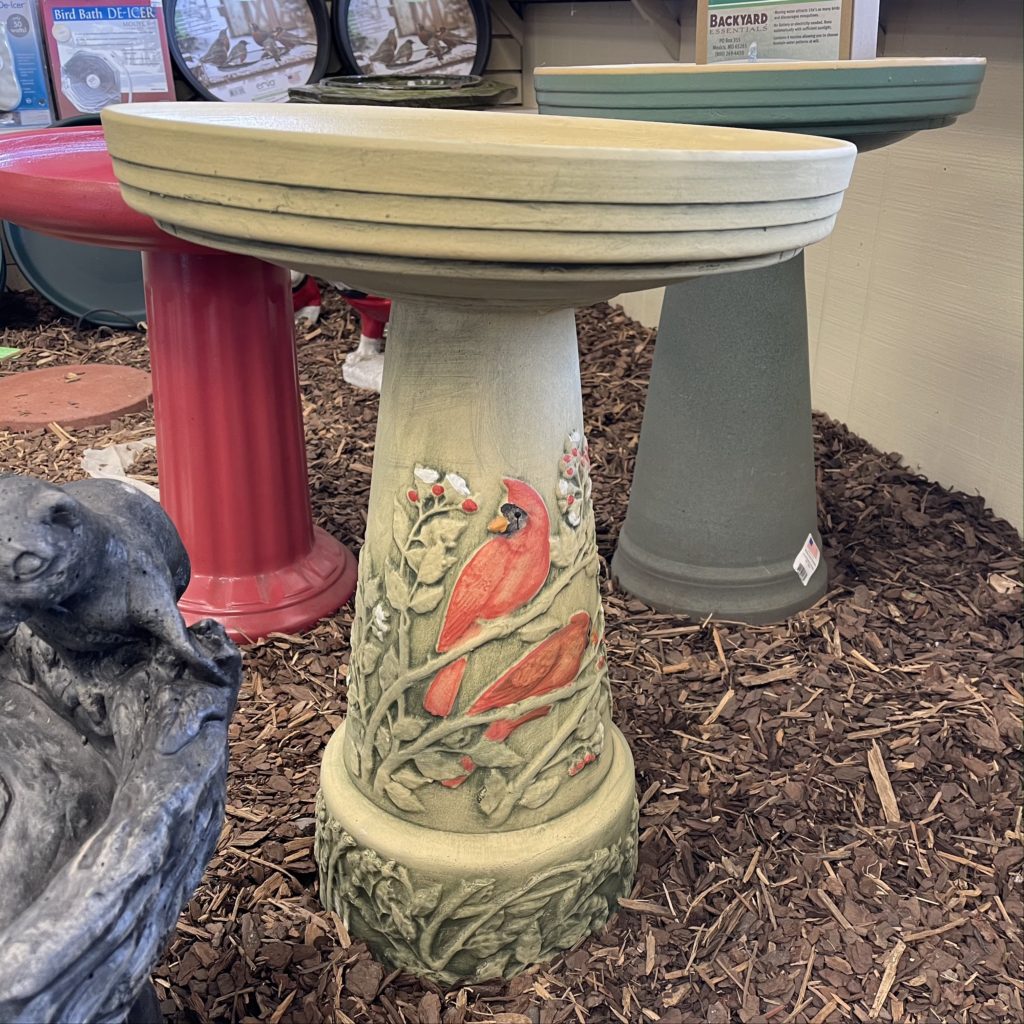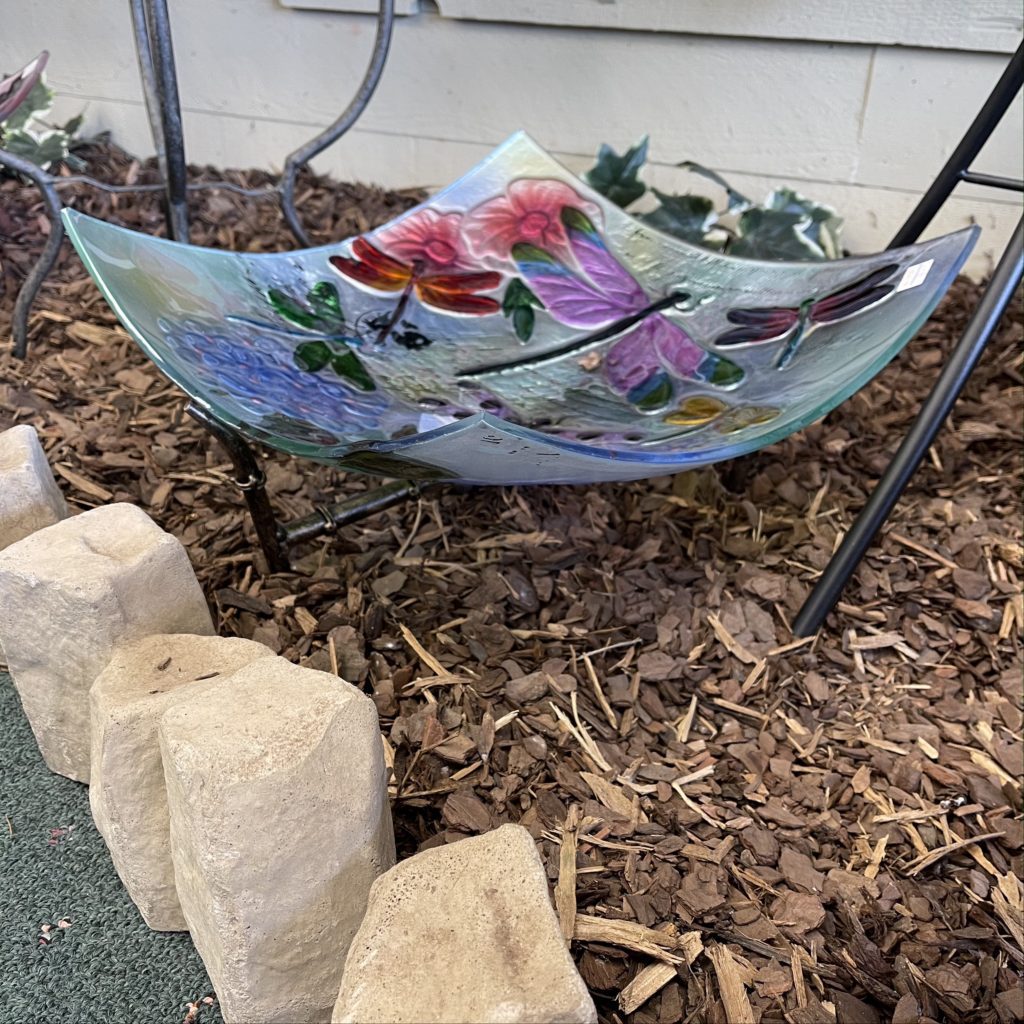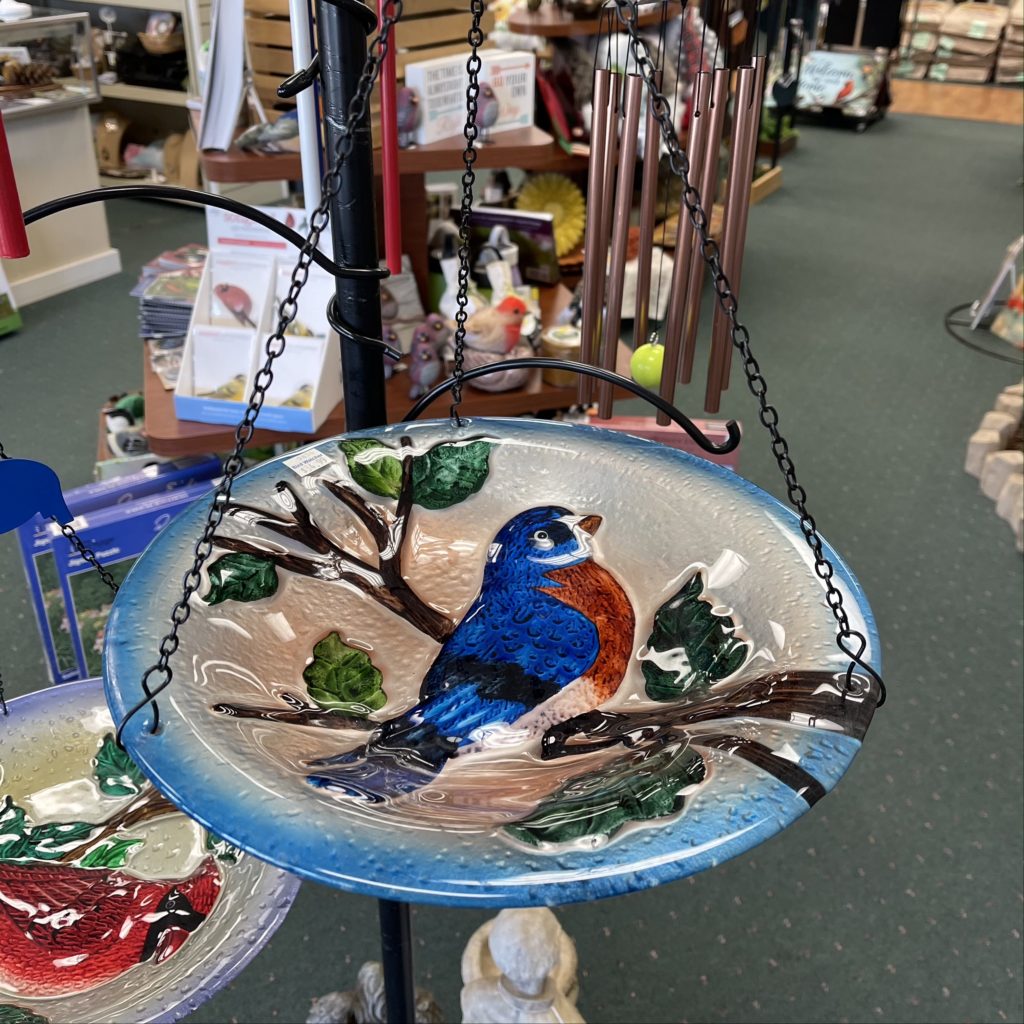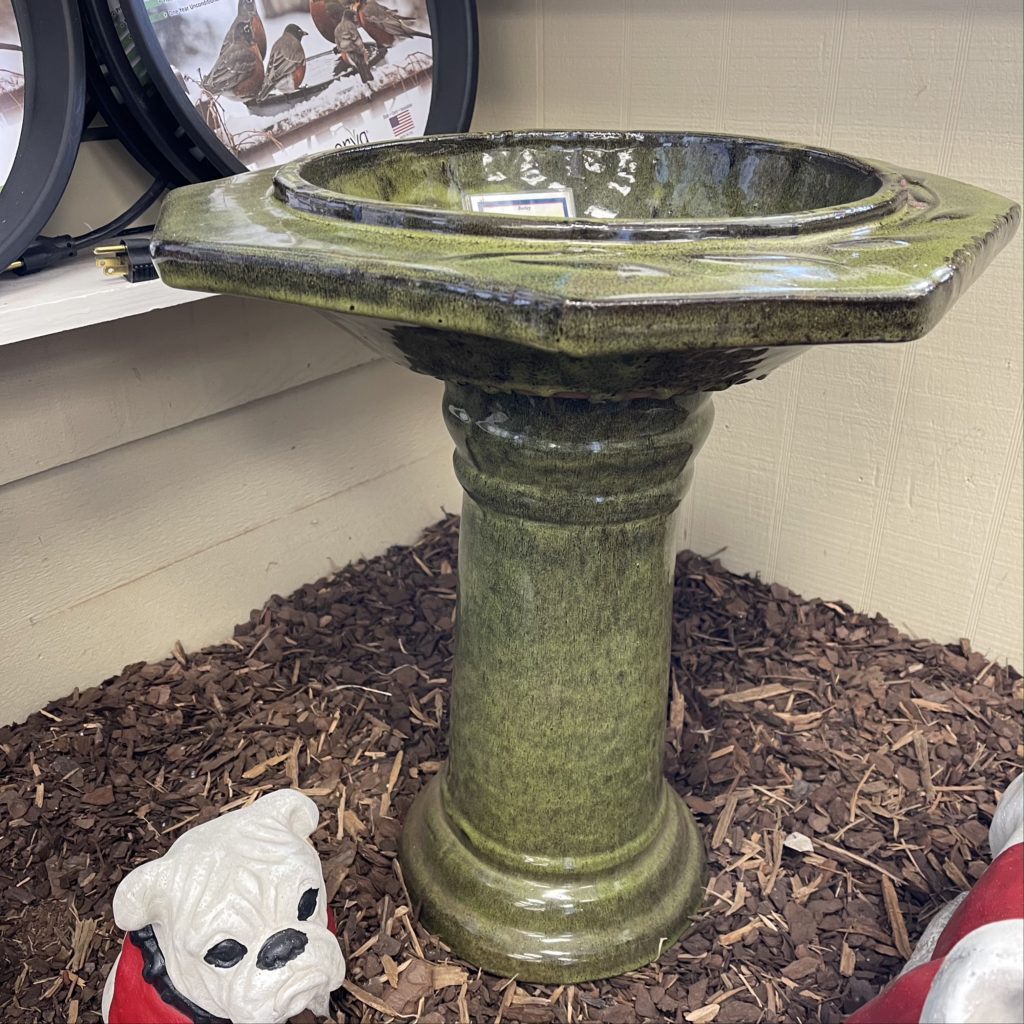
A concrete bird bath is a beautiful, sturdy option that can be found everywhere. You can install one in your backyard and start bird watching from your balcony! They come in many shapes and designs, so you can decorate your backyard, garden, or any other space while expressing your affection for birds. To know more about bird baths, especially concrete bird
baths, keep reading!
Water is essential for all organisms, including birds. Naturally, birds are also attracted to water, and therefore water is an excellent tool for attracting these feathery beauties! Birds need water for drinking and preening. Water helps regulate body temperature and keeps them cool.
What is a Bird Bath?
A bird bath is an artificial puddle or a shallow structure that can be filled with water. It offers a rim for perching and often is filled with pebbles and sticks for solid footing. Birds may drink, bathe, and cool themselves in these baths. A normal puddle of water is very different from a bird bath.
Bird baths have moving water that is meant to catch a bird’s attention. It is an artificial creation, often painted brightly, to catch the bird’s eye. A clean environment that is maintained, where birds will be protected from the predators which roam freely in the wild are the main requirements of creating a birdwatching backyard.
Did You Know?
A bird bath can also help remove dust, loose feathers, parasites, and other waste substances from a bird’s body. Bathing maintains hygiene which is a very important aspect in maintaining health.
Birds fly for long distances and tire out easily. They need resting places, especially in migration season. Urbanization has replaced springs, ponds, and puddles with roads, buildings, and pavement.
Bird enthusiasts and anyone interested in the survival and protection of birds can use bird baths as a tool for helping them to quench their thirst and clean themselves. In summer, when there is a desperate need for water, bird baths protect birds from dehydration and offer a safe and cool environment for relaxation.
During winter, warm bird baths offer a source of water that isn’t frozen up, and the additional pebbles and twigs help birds drink water without stepping into the cold water.
How to Make a Bird Bath?
To make a bird bath, you need a shallow slope with a good approach to water. The depth of the water should be no more than 0.1 to 1 inch at the edge and 2 to 3 inches in the middle.
Bird baths should always be placed in a shady, cool place or near a tree; we help them preen comfortably by doing this. Arrange objects like stones and small twigs in the bird bath to help them stand in the middle of the bath without getting their body wet.
However, knowing how to make an entire concrete bird bath from scratch is difficult. You must have a basic understanding of concrete structures to do so.
How to Use a Bird Bath?
Bird baths help us study birds and their movement in different seasons. Although the main function of the bird bath isn’t known, bathing maintains the birds’ beautiful feathers. Feathers are very useful for birds. They help with flight, insulation and even have waterproofing abilities!
These feathers regularly shed off, but in the meantime, they need to be properly maintained. Taking baths help them to get rid of dirt and grime that serve as an excellent breeding ground for bacteria. It also prevents the gradual wearing off of feathers while actively removing allergens.
Bird baths need maintenance, you need to replace the water every day. This is because feathers and other contaminants fall into the water which can be harmful and even toxic for birds if left uncleaned.
On extremely sunny days, evaporation can cause your bird bath to dry out. A deep bird bath is hard for smaller birds to rest in. On the other hand, a bird bath that is too shallow is not of much use. Choose a bird bath with shallow edges with a 2-inch maximum dip in the middle. Keep pebbles and sticks in this area for perching.
Types of Bird Baths
Ground Bird Bath
Ground bird baths are the simplest and easiest bird baths, they rest on the ground, as the name suggests. They are built by using shallow dishes. This type of bird bath is essential for huge birds like Ducks, although many small birds visit them too.
Pedestal Bird Bath
Pedestal bird baths are similar to ground bird baths, but have an elevated basin. These are heavy and bulky, yet they are the most popular ones. They have a pillar on which a detachable basin can be placed.
Hanging Bird Bath
Hanging bird baths have a shallow basin that is hung on garden hooks or tree branches. It has a smaller capacity and many small birds visit this bird bath. They are close to trees, and birds prefer these if they want to avoid terrestrial predators.
Fountain Bird Bath
Fountain bird baths have an additional tap that resembles flowing water through a tap or fountain. These bird baths attract birds because they makes the sounds of running water. They are mainly found in parks.
When to Get a Concrete Bird Bath?
Your choice of bird baths should be based on your landscape and your aesthetic preference. However, if you have a huge garden or backyard and want a beautiful bird bath, a concrete pedestal bird bath is your best choice.
You can add a huge ornate fountain and intricate design to concrete bird baths. Stay away from ceramic bird baths because their edges can cause slipping and difficulty in perching. A concrete bird bath is the sturdiest choice and they won’t get damaged for a long time. It also has the highest potential for ornate design.
You can choose a concrete bird bath without a pedestal if you have a smaller garden or if the plants in the area are smaller and there aren’t many trees around. You can decorate these baths too.
The concrete is heavy, therefore you may find it hard to move. Choose a permanent spot for your concrete bird bath. Hanging bird baths should be light, and consequently, this is not a good option for concrete. Plastic bird baths should
be preferred for this. A combination of concrete and stone can also be used to make bird baths.
How to Paint a Bird Bath?
The color of your bird bath is very important. The most obvious use is that you can beautify your garden by painting your bird baths. If you choose your colors right, you can even attract birds by painting your bird bath.
Painting a bird bath doesn’t always need to be done by a professional, you can always start a DIY bird bath painting project at home. Remember, the constant exposure to water, wind, and sunlight makes the paint on bird baths chip off regularly. This is why you will need to repaint your bird baths repeatedly.
If your concrete bird bath shows signs of paint wear off, you need to prep it before starting to paint again. Dump out all the water from the bird bath first. Then take a wire brush and scrub the concrete bird bath till all the remaining paint is gone. Next, clean out all of the dirt and debris and then leave it out in the sun to dry. Proceed with the painting only after the bird bath is completely dry. However, you can skip this process if you want to paint a new, unpainted bird bath.
You can’t use just any kind of paint on a concrete bird bath. Latex paint and acrylic paints are safe for bird baths. Don’t choose a paint that contains petroleum products or oils. Use a primer before painting to ensure that the paint sticks to the bird bath well.
The Process
For painting, you may want to move your bird bath indoors. Keep a protective cover on the floor underneath it to prevent the paint from staining your floors. A plastic sheet should do the job. You can choose a brush for painting or a spray can. If you are not an expert at handling brushes, a spray can is easier to use.
When you’re using a spray can, move your hands in a side-to-side motion without pausing and try to keep the paint as evenly distributed as possible. Paint a second coat in the same way after leaving a gap of one or two hours between applications.
You can choose to seal it all in with a clear acrylic coat. The best part? You may not have to repaint your bird bath as often if you just repaint the clear coat properly every year! It also gives an excellent finish to your DIY bird bath!
How to Attract Birds to Your Concrete Bird Bath
Painting bird baths don’t just play an aesthetic role, they can even attract or repel birds! Different types of birds prefer different colors, so you can tweak the colors a little bit in order to attract the kind of birds that you want!
Smaller birds prefer neutral, earthy colors so they can feel camouflaged and safe. This includes the colors brown, green, tan, etc. Try to recreate a forest with your colors.
For bigger birds, choose bold and attractive colors. Diurnal birds are those birds that are active during the day. The colors yellow and red are a significant part of their visibility spectrum, and therefore, those are the colors that are most likely to attract these birds.
Some birds prefer the colors green and blue. To choose a color to make the best bird bath for attracting birds, you need to remember that all birds don’t prefer the same colors. You should research the dominant bird species in your area and choose their preferred colors for your bird bath. Just remember to steer clear of white. Birds are neither attracted to white nor do they feel safe against a white background.
Running water, like fountains, is, however, a sure-fire way to attract birds. The sound of running water will alert them to the presence of your bird bath.
More Useful Tips
During hotter seasons, birds come to bird baths to keep cool. Place your bath in a cool, shady area since they may not be comfortable under the harsh sun. Keep pebbles in the bath to give your birds strong footing.
Use heated bird baths during winter. Warm water sources during cold weather are extremely helpful for the birds to maintain their body warmth and be comfortable. Heated bird baths should be cleaned carefully and regularly because any build-up can cause them to stop working. You can also use a bird bath cleaner for this purpose. A solution of water and white vinegar with a 9:1 ratio is a good cleaner to use. If your bird bath is electrical, protect the wiring and plugs from moisture, heat or pets, and any other animal that frequents the area.
If you can’t get a heated bird bath for the winter, just use pebbles and sticks to prevent the birds from coming into contact with cold water. DO NOT use salt or anti-freeze because they can be fatal to these birds. What you can do instead is use a small, floaty ball in your bath. It will get blown by the wind and constantly break the ice so it won’t get fully frozen up.
You have to replace the water in your bird bath regularly. Splashing and drinking will reduce the total amount of water in your bath and birds leave behind feathers and dirt that will contaminate the water. You should replace the water in your bird bath every one or two days.
Final Words
Concrete is a great, sturdy choice for making bird baths. Ceramic bird baths are slippery, and plastic bird baths are a great choice for making small bird baths or hanging bird baths.
You can paint concrete bird baths to attract more birds, but you need to make sure you’re using non-toxic paint that won’t hurt birds. You should also use a bird bath cleaner to clean your bird baths regularly.
Concrete bird baths may absorb water, so apply a primer before painting and you should be good to go. With these pointers, you can fabricate or buy the perfect concrete bird bath!
You can set goals to bird-watch after you have placed your concrete bird bath in your backyard and record your results.










